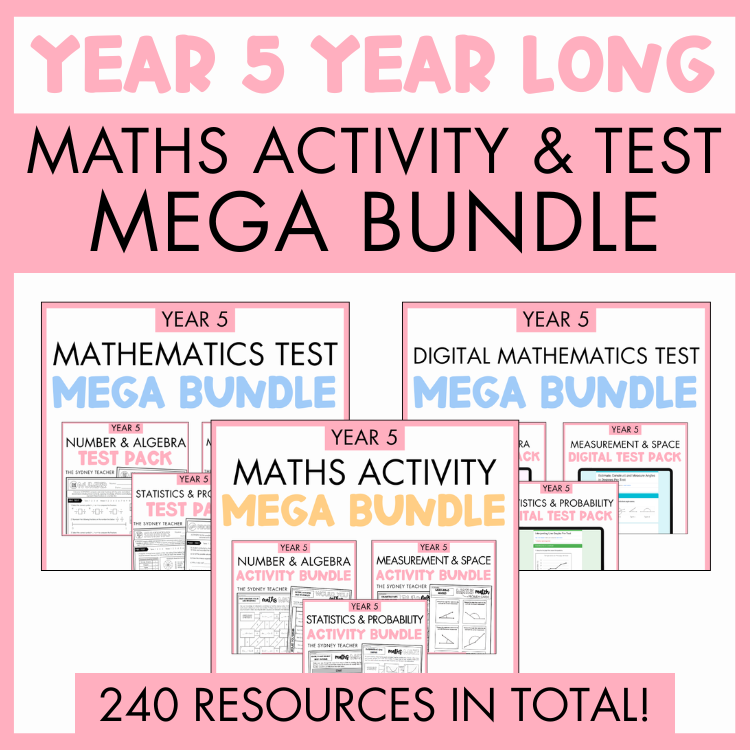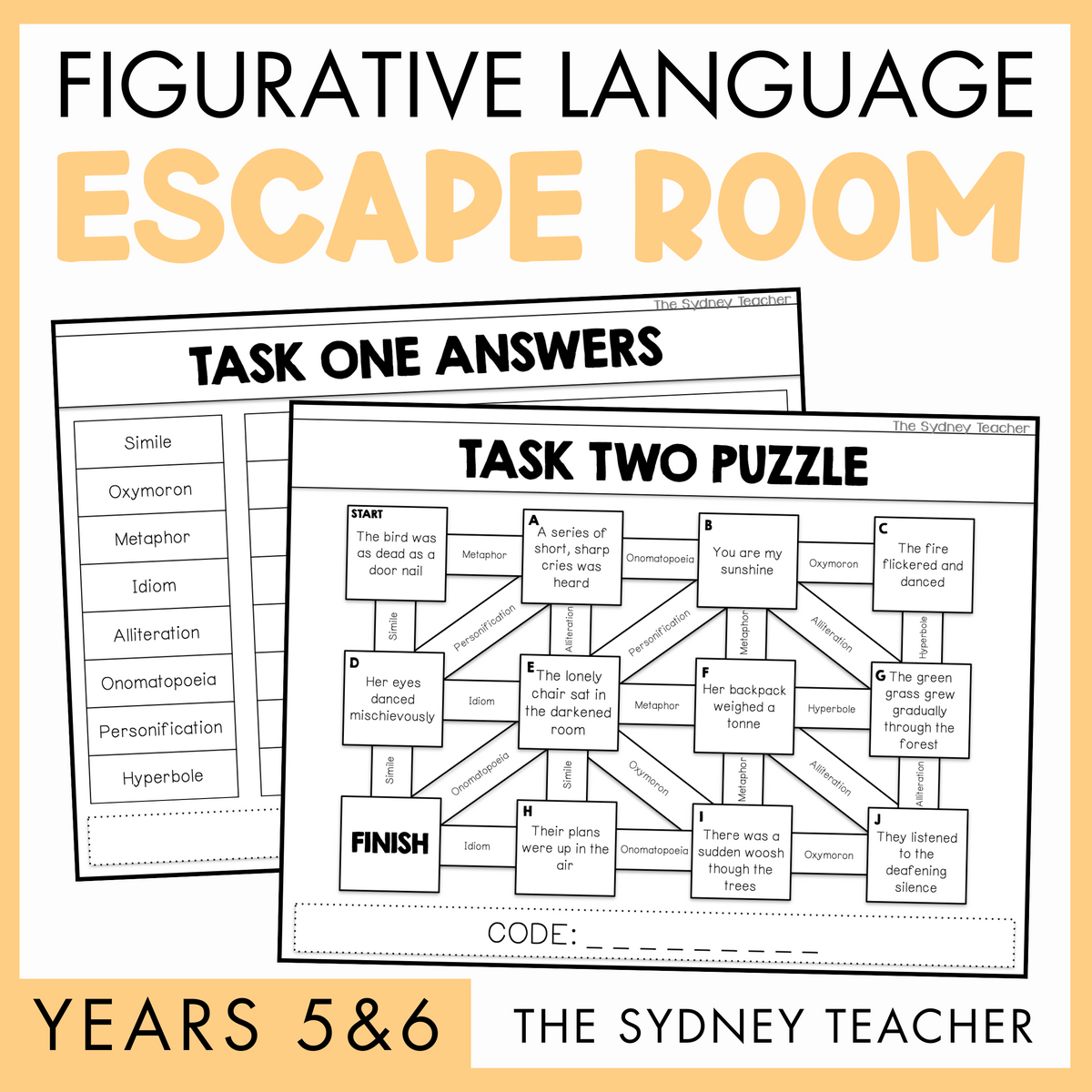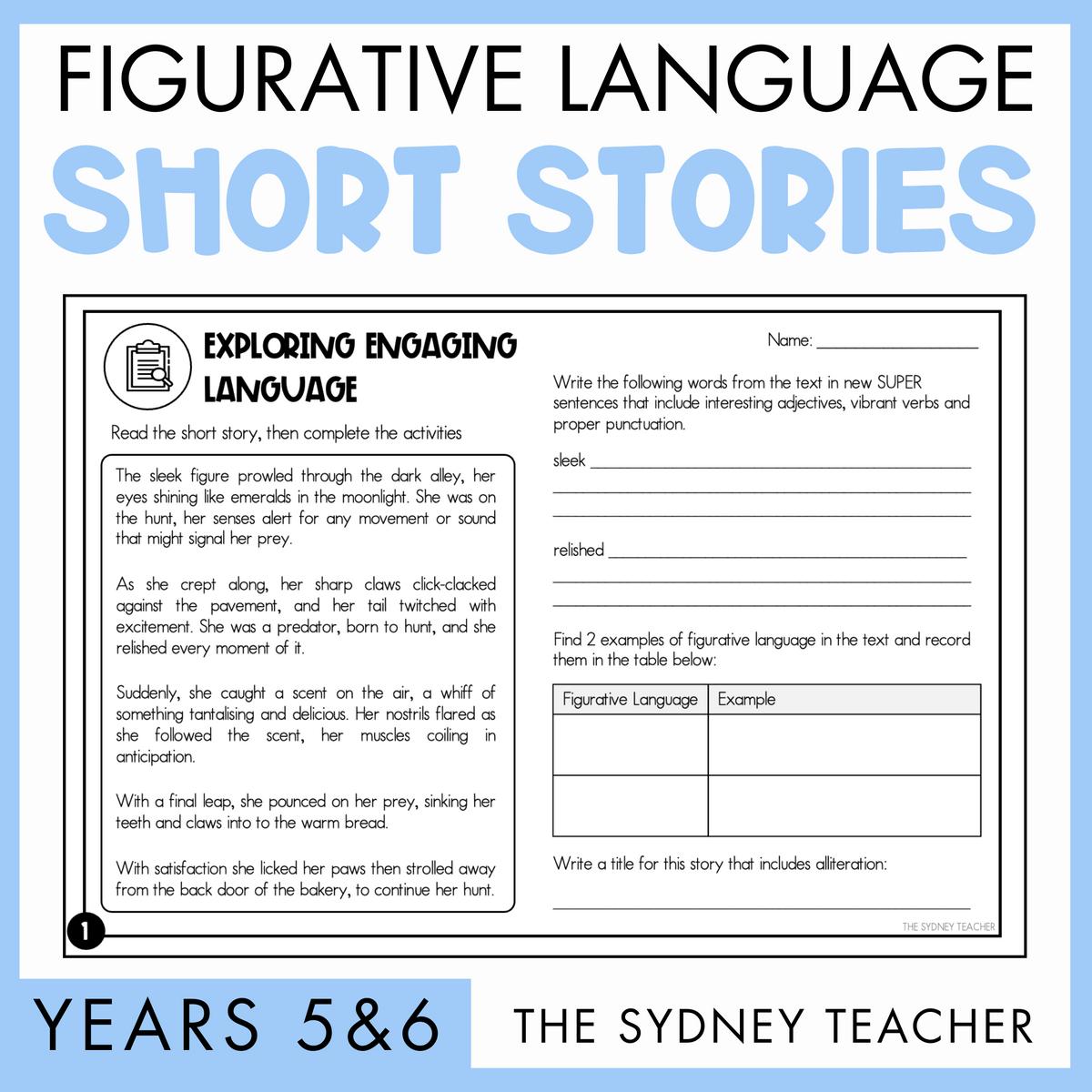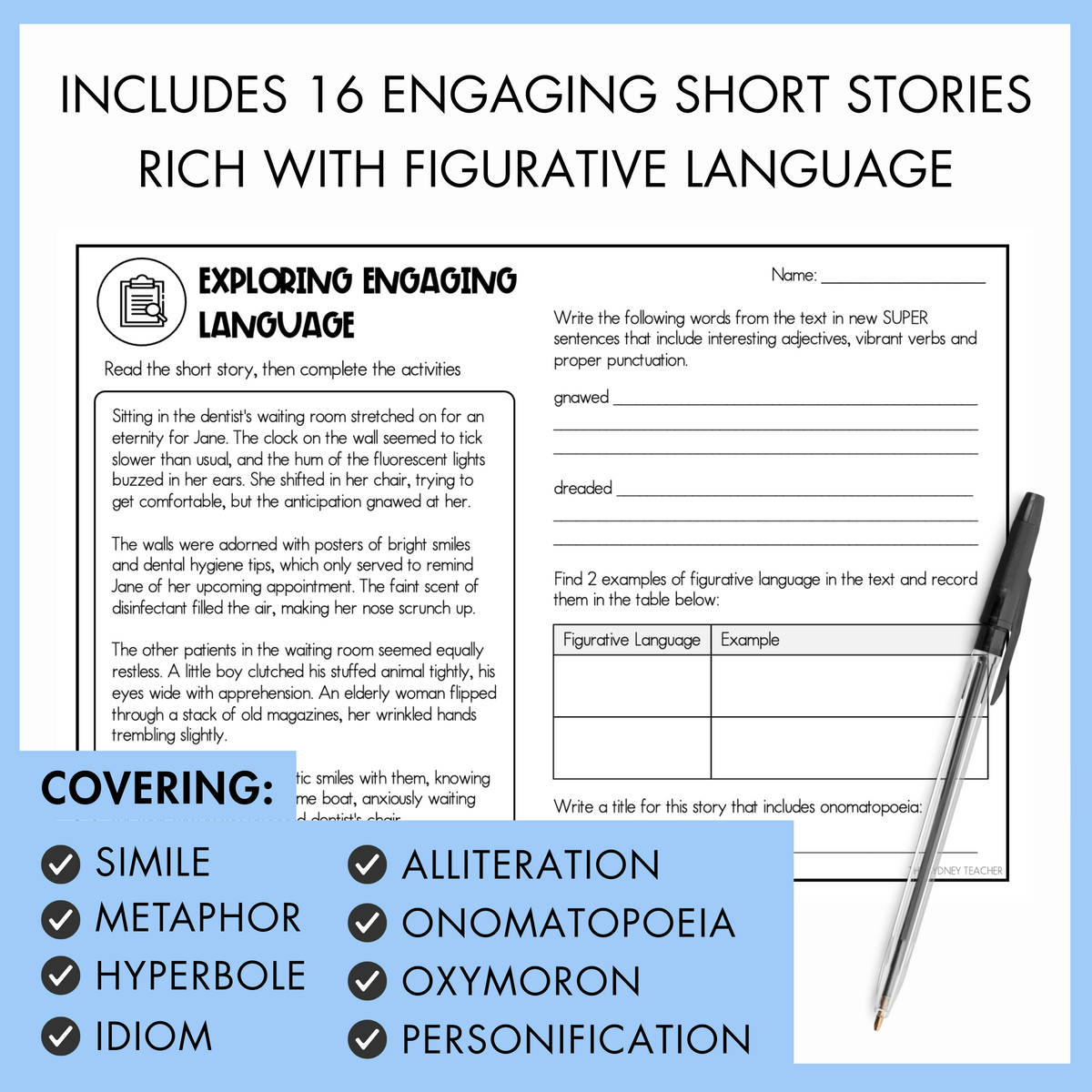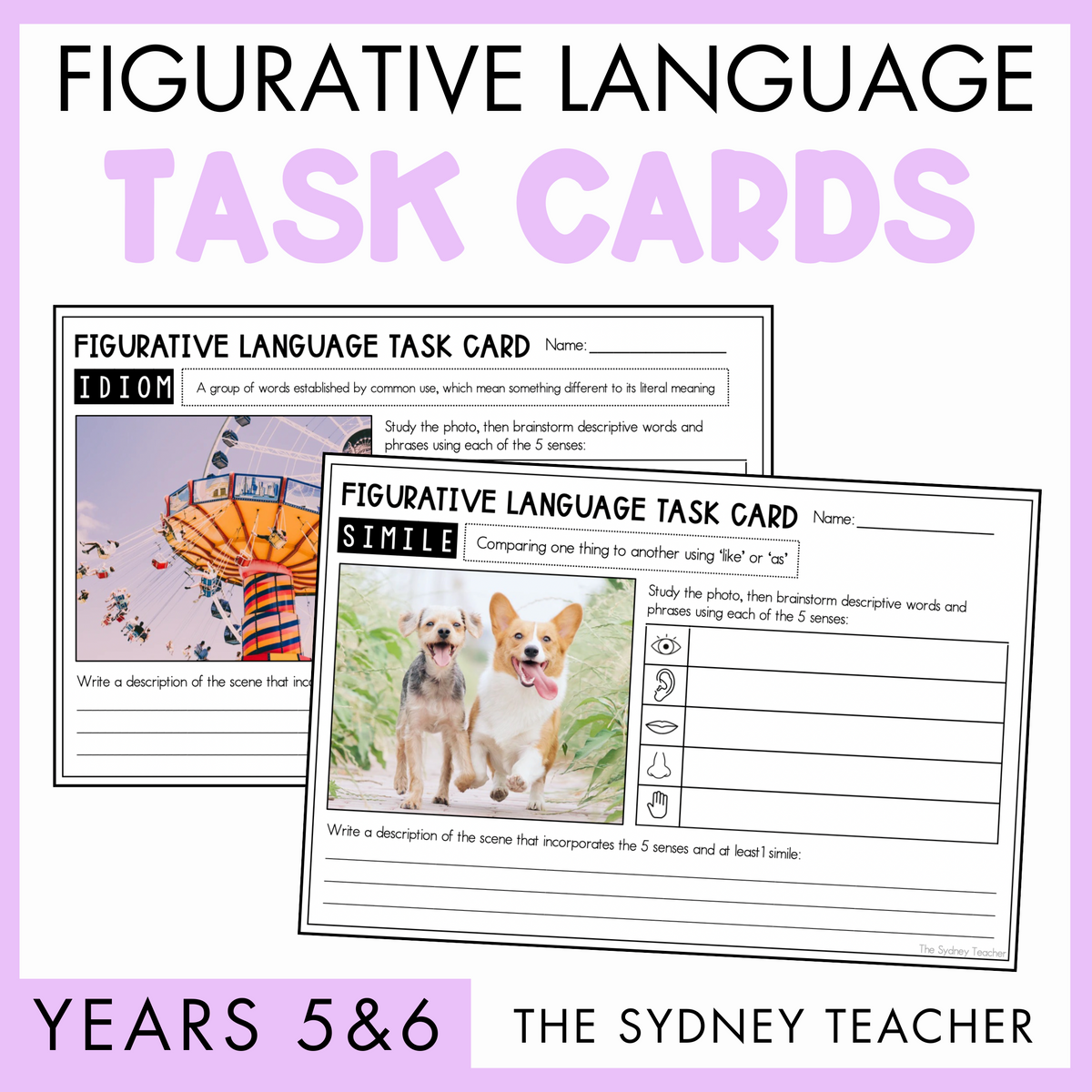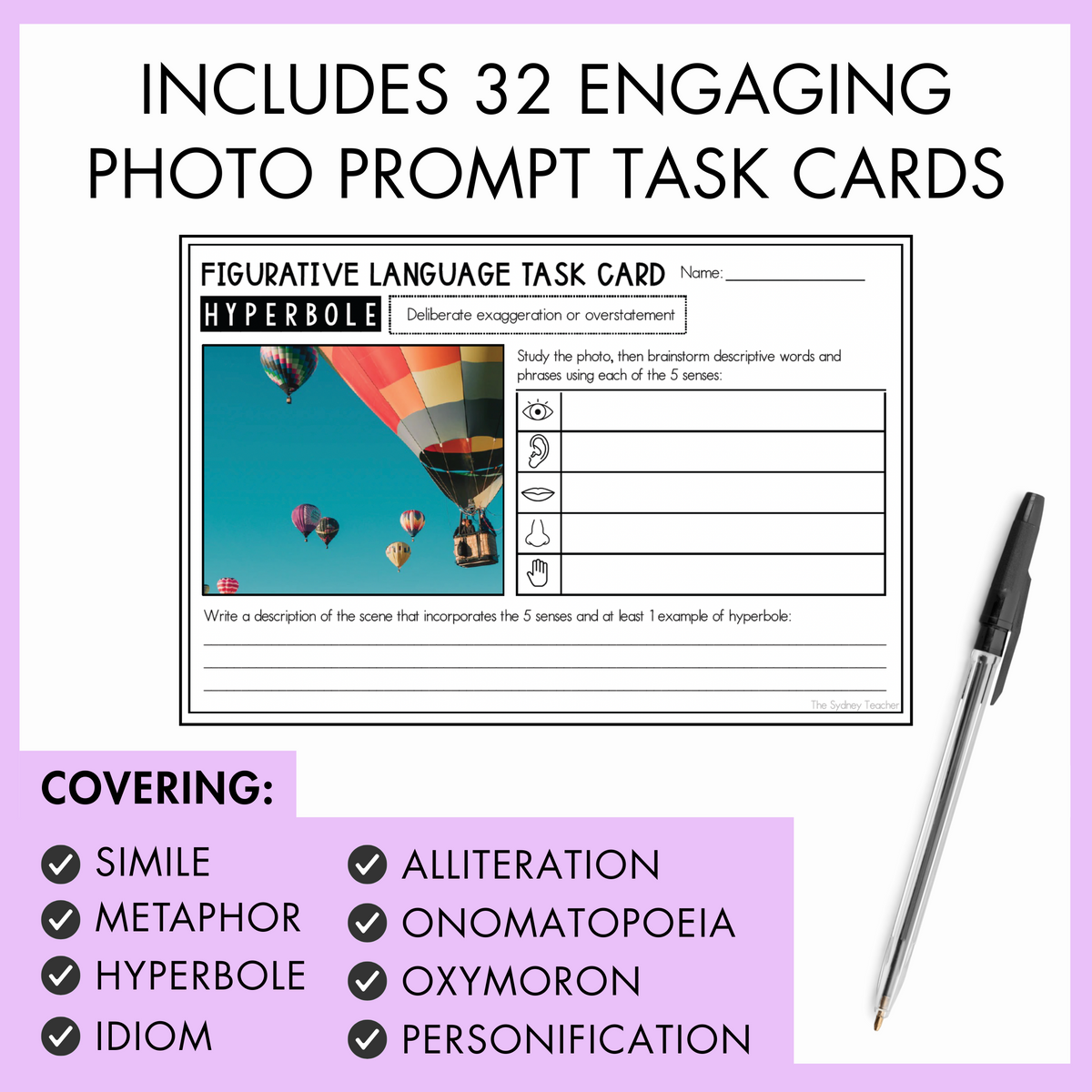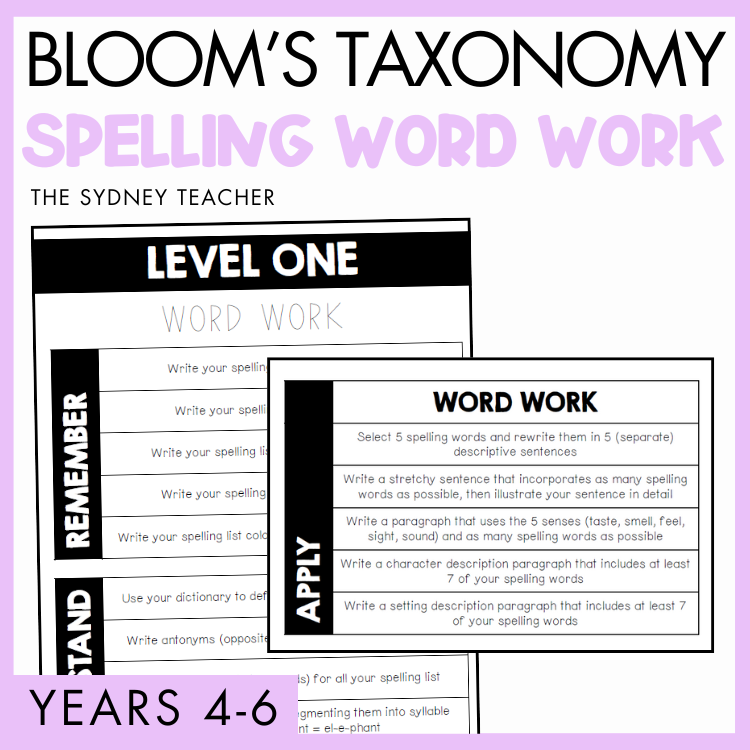

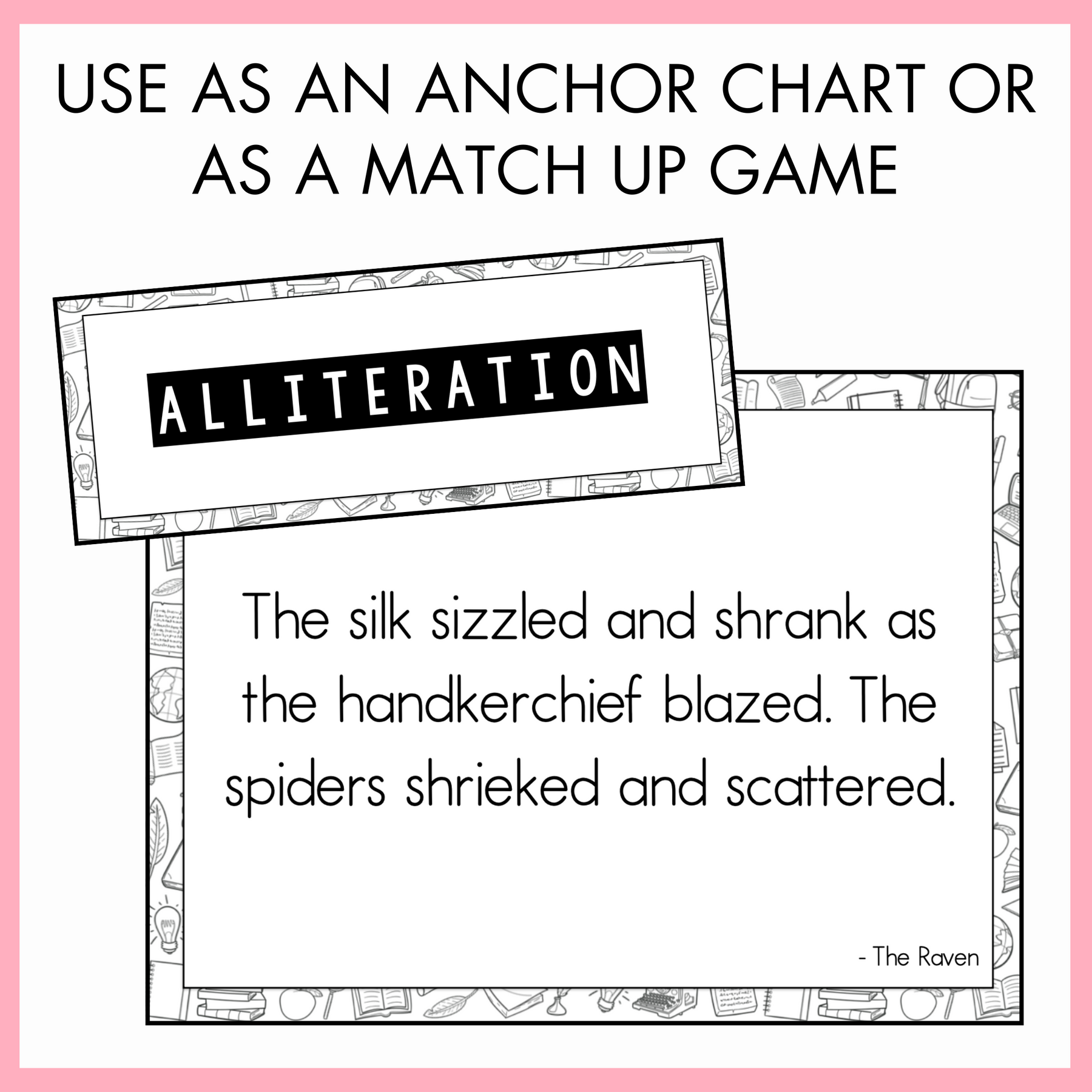
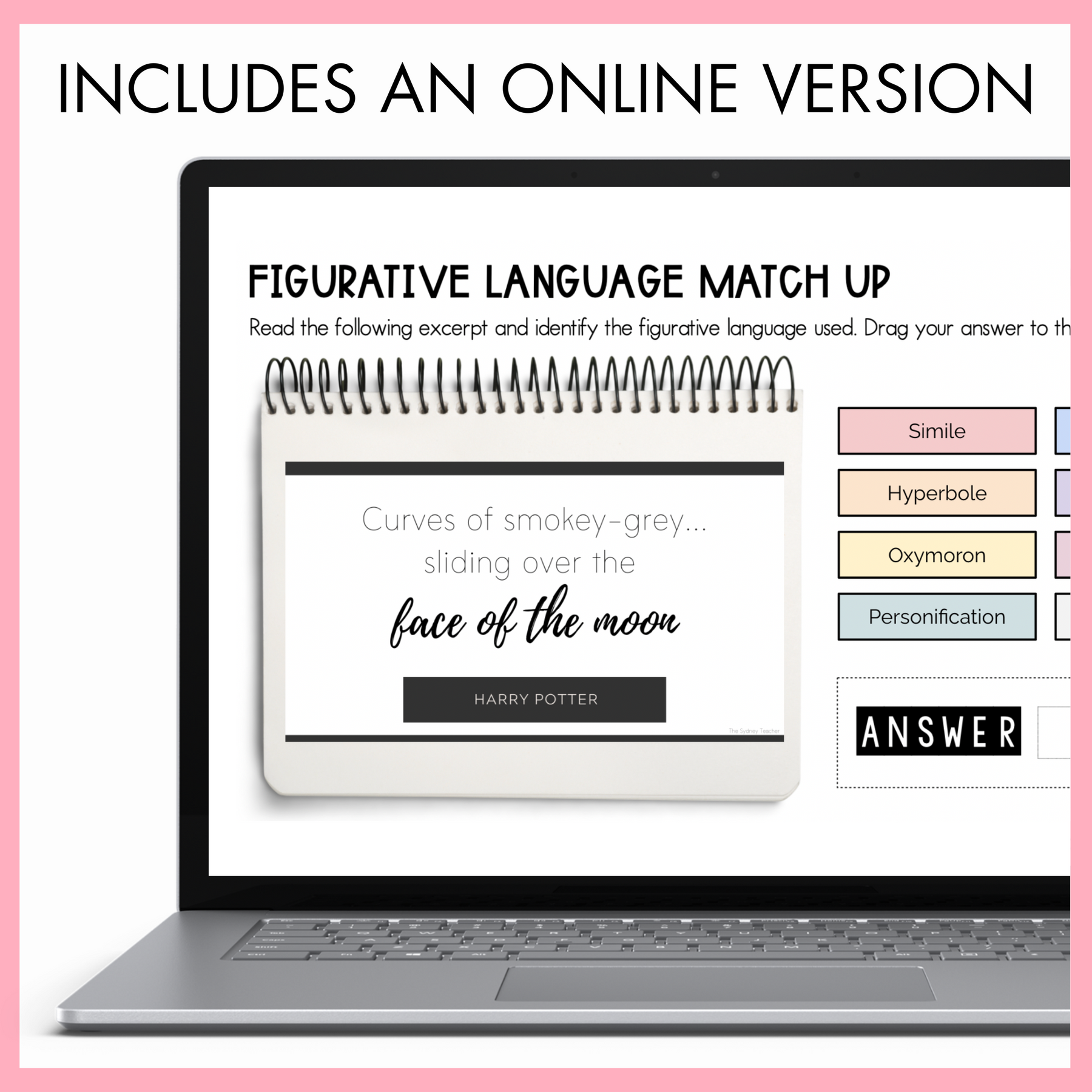
Figurative Language in Literature
Figurative language, as with many writing concepts, are best taught through rich literature.
Figurative Language Covered: Simile, metaphor, hyperbole, idiom, oxymoron, alliteration, personification, onomatopoeia.
Some examples:
- "Edgar Marsalla laid this terrific fart... her damn near blew the roof off" Catcher in the Rye (Hyperbole)
- "Shafts of light poured down into the room from windows set high in the massive walls" Ranger's Apprentice (Personification)
Purchase in this bundle
Why Choose The Figurative Language in Literature?
- This resource exposes your students to a wide range of amazing authors and texts, and may even inspire them to read the books!
- Students can learn figurative language in the most effective way - through context!
- Excerpts can also be used as story starters for a new narrative!
- Posters can be printed and displayed around your classroom!
- Posters can be coloured in and glued into students’ books!
What's Included?
- Posters with figurative language definitions
- 14 examples of figurative language from rich texts (with and without answers displayed)
- An online version, perfect for homework or to use in whole class lessons
Teachers Who Bought The Figurative Language in Literature, Also Loved...
Free Resources from The Sydney Teacher
Get free ideas and inspiration to use in your classroom today
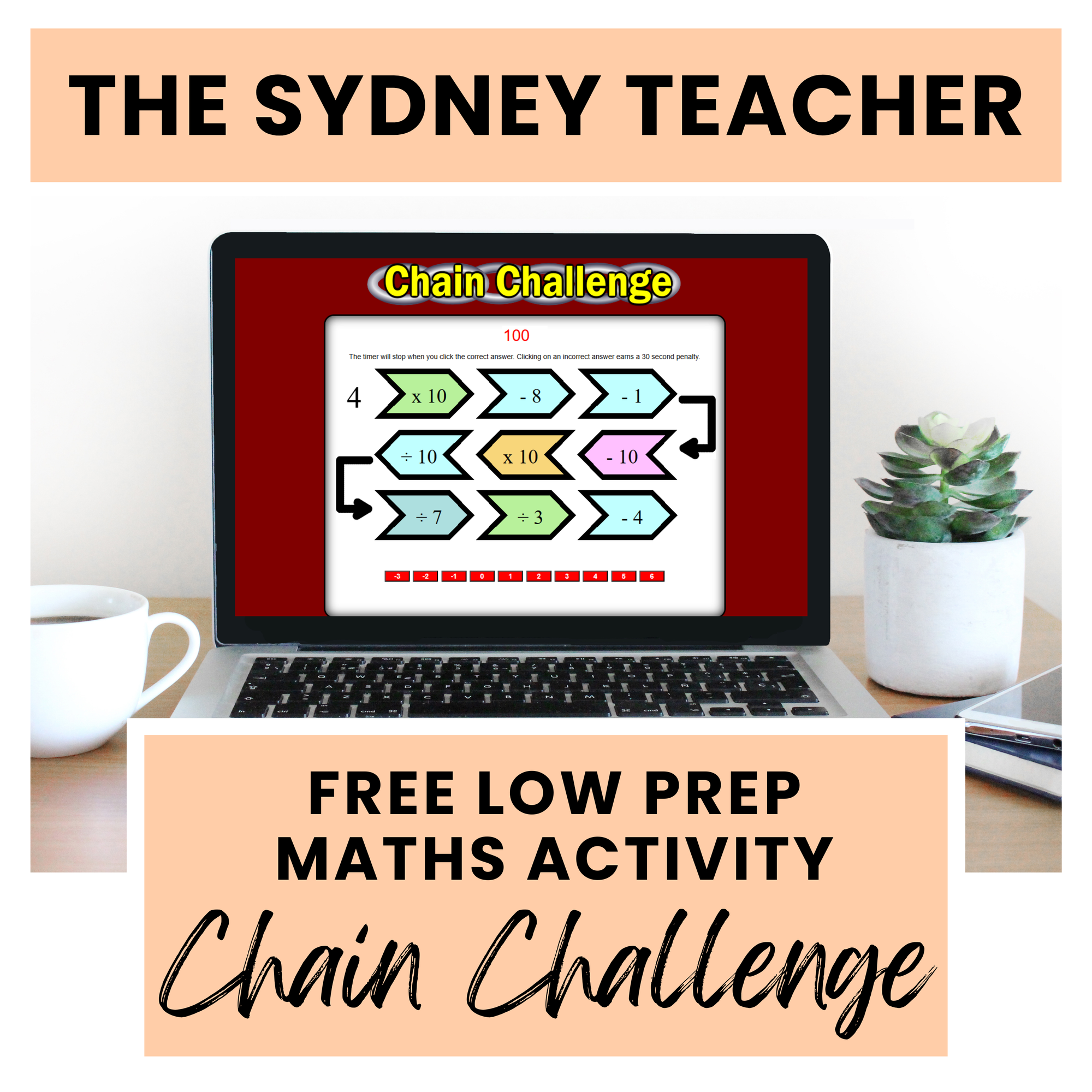
Maths Warm-Up: Chain Challenge
Chain Challenge from Transum.org is a free, engaging maths warm-up that gets students focused, thinking, and excited to participate.
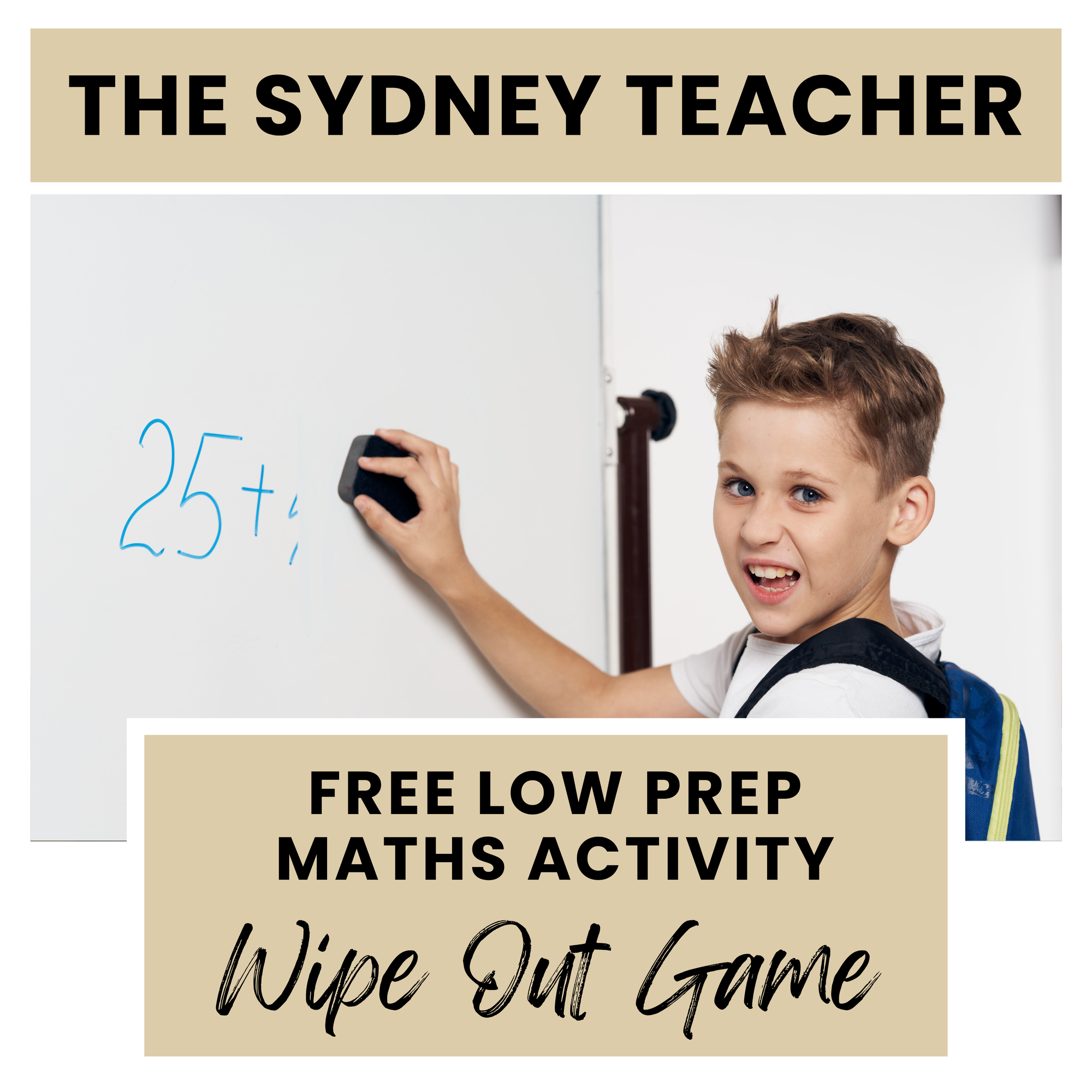
Maths Warm-Up: Wipe Out Game
If you’re looking for a maths game that really hooks students, you’ve got to try Wipe Out. It’s quick, lively, and always gets students on their toes while practising their number skills.

Maths Warm-Up: What's the Date Today?
This maths warm-up brings a little excitement to your morning routine. It is a quick, interactive maths activity that engages the whole class.

